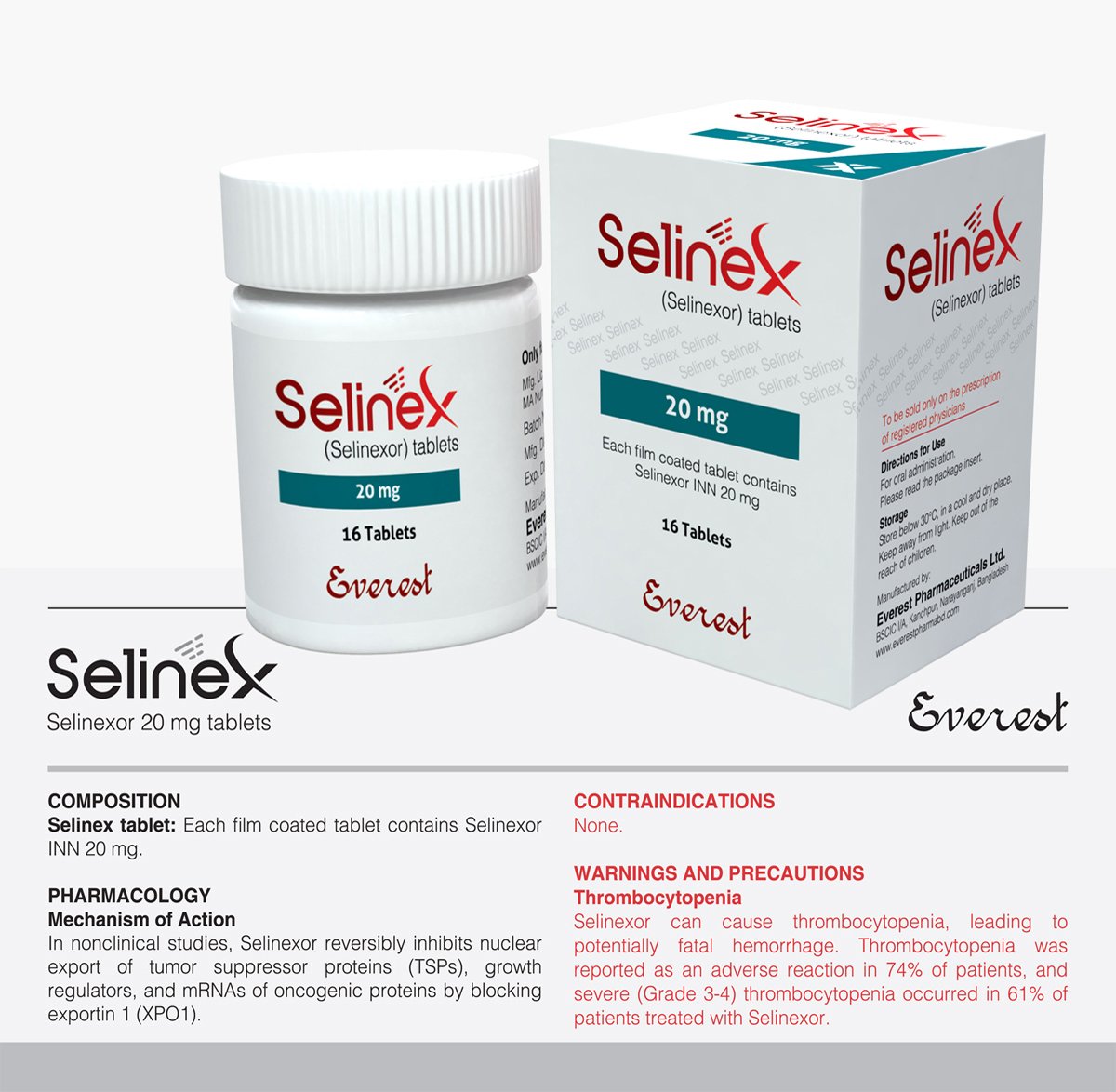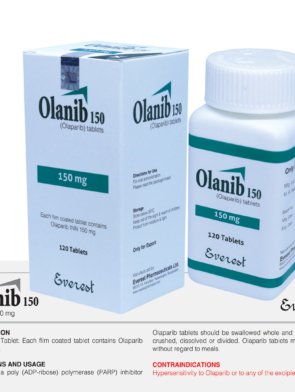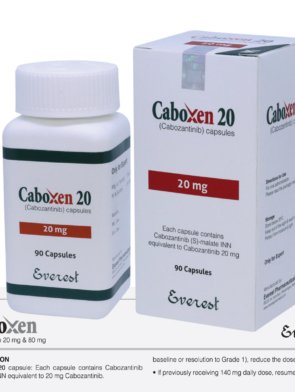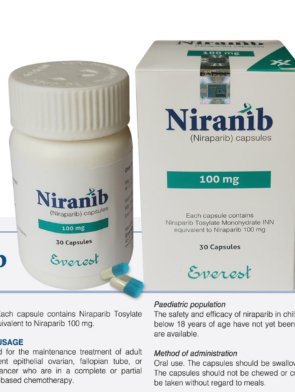Selinex (Selinexor INN) 20 mg
£0.00
Selinexor, marketed as Selinex under the INN designation, is prescribed to adults with relapsed or refractory multiple myeloma who have not responded to previous treatments, including proteasome inhibitors, immunomodulatory agents, and anti-CD38 monoclonal antibodies. This medication acts by selectively inhibiting nuclear export, specifically targeting exportin 1 (XPO1) to increase the accumulation of tumor suppressor proteins in the nucleus, which promotes apoptosis and inhibits tumor growth. Typically, it is taken orally at a 20 mg dose once weekly alongside dexamethasone. Common side effects like nausea, fatigue, and gastrointestinal issues are observed, necessitating careful monitoring for potential adverse effects.
- Selinexor may induce thrombocytopenia and neutropenia, necessitating dose adjustments or treatment interruptions.
- Patients should be monitored for gastrointestinal toxicity, including nausea, vomiting, and diarrhea.
- Due to the risk of hyponatremia, serum sodium levels should be monitored during treatment.
- Patients should be monitored for signs of infection, and prompt treatment should be initiated if necessary.
Indication: Selinexor (Selinexor INN) is approved for treating adults with relapsed or refractory multiple myeloma (RRMM) who have undergone four prior therapies and whose condition is resistant to at least two proteasome inhibitors, two immunomodulatory agents, and an anti-CD38 monoclonal antibody.
Pharmacology: Selinexor operates as a selective inhibitor of nuclear export (SINE), targeting exportin 1 (XPO1) to hinder nuclear export. By inhibiting XPO1, Selinexor boosts the accumulation of tumor suppressor proteins in the nucleus, which prompts apoptosis and impedes tumor growth.
Dosage and Administration: The recommended Selinexor dosage is 80 mg orally once weekly on Days 1, 8, and 15 of a 28-day cycle, along with dexamethasone. It is advised to take Selinexor with food and swallow it whole with water.
Interactions: Selinexor interacts as a substrate of CYP3A4, thus concurrent use with potent CYP3A4 inhibitors or inducers should be avoided. Caution is warranted when co-administering with medications prolonging the QT interval or those that are P-glycoprotein substrates.
Side Effects: Common adverse reactions associated with Selinexor include nausea, fatigue, decreased appetite, weight loss, vomiting, diarrhea, thrombocytopenia, anemia, neutropenia, hyponatremia, and peripheral neuropathy.
Precautions and Warnings:
Overdose Effect: In the event of an overdose, supportive care is recommended. There is no specific antidote for Selinexor overdose, so patients should be closely monitored for adverse reactions and managed symptomatically.
| Product Name | Selinex |
|---|---|
| Generic Name | Selinexor INN |
| Formulation | Tablet |
| Available Pack size | 16 Tablets |
| Available Strength | 20 mg |
You must be logged in to post a review.





Reviews
There are no reviews yet.